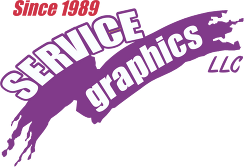Why ADA-Compliant Signs Are Essential for Your Business
Compliance with accessibility laws isn’t just about avoiding penalties; it’s about fostering inclusion and creating spaces that welcome everyone. ADA-compliant signs ensure that people of all abilities can navigate businesses, facilities, and services with confidence. From hospitals and schools to restaurants and offices, clear and accessible signage plays a crucial role in building a positive customer experience and maintaining a strong reputation. Let's explore why ADA-compliant signage is essential, the legal implications, customer benefits, and practical steps to implement them effectively.
1. Understand the Legal Imperatives of ADA Compliance
The Americans with Disabilities Act (ADA), which was enacted in 1990 according to the U.S. Department of Justice Civil Rights Division, sets forth a comprehensive framework for ensuring access to public and commercial spaces. One of the core requirements involves proper signage, which includes braille, tactile letters, and high-contrast visuals that make navigation possible for individuals with disabilities. These standards apply to both large corporations and small businesses, ensuring equal access across the board.
Working with experts in ADA signage helps organizations avoid costly mistakes. Specialists understand placement rules, font specifications, and tactile features that must be included. By relying on professional guidance, businesses can be confident their signage meets current requirements and avoids future legal complications.
2. Recognize the Consequences of Non-Compliance
Ignoring ADA requirements can bring steep consequences, from fines and lawsuits to reputational harm. Lawsuits related to accessibility violations are becoming increasingly common, and courts often side with individuals who face barriers. Settlements, penalties, and mandated retrofits can quickly add up, straining financial resources that could have been used for business growth.
Beyond legal issues, non-compliance damages customer trust. Modern consumers expect organizations to demonstrate social responsibility, and failing to provide accessible signs sends the opposite message. Customers may avoid businesses that appear unwelcoming or discriminatory, leading to lost revenue and weakened community ties. Proactive compliance shields businesses from these risks while reinforcing their dedication to accessibility. By staying ahead of regulations and investing in the right signage, companies showcase their values and commitment to customer well-being.
3. Stay Aware of Recent Legal Cases and Precedents
Legal cases continue to shape the expectations surrounding ADA compliance. Courts have repeatedly held businesses accountable for signage that fails to meet accessibility standards, even in seemingly minor areas. These precedents reinforce that partial or outdated compliance is not enough.
Businesses that overlook compliance often face costly retrofits, in addition to reputational fallout. For example, companies that thought existing signs were “good enough” later discovered that updates to standards required modifications. These situations highlight the importance of ongoing vigilance and review. Keeping up with these legal developments is essential. Consulting with legal experts or compliance auditors allows businesses to adapt signage strategies before issues escalate into lawsuits. Staying informed ensures long-term protection and operational consistency.
4. Collaborate with Legal and Compliance Experts
ADA compliance can be complex, but legal and regulatory professionals help simplify the process. Partnering with experts ensures businesses cover all aspects of signage requirements, from braille to placement. These advisors can also conduct audits, evaluate risks, and create plans tailored to specific industries.
For small businesses, working with legal specialists may seem daunting, but scalable solutions are available. Such partnerships offer peace of mind and protect against costly violations. Additionally, legal experts provide ongoing value by monitoring regulatory changes. As ADA standards evolve, their guidance helps businesses adapt seamlessly, maintaining compliance without disruption. This foresight saves money and strengthens community trust.
5. Take Practical Steps to Achieve Compliance
Meeting ADA requirements starts with a thorough audit of current spaces. Business owners must identify gaps in signage—whether at entrances, restrooms, or hallways—and plan corrections accordingly. Common updates include adding braille, adjusting font sizes, and improving sign placement.
Once gaps are identified, businesses can implement new signage that balances legal requirements with design appeal. Collaboration with experienced sign designers ensures compliance without sacrificing aesthetics. Signs should enhance navigation while blending into the environment. Regular reviews and staff training sustain compliance over time. By making accessibility an ongoing priority, businesses avoid lapses and ensure that inclusivity remains a core part of operations.
6. Promote Inclusivity Through Accessible Design
Accessible signage is more than a legal necessity—it is a visible marker of inclusivity. Signs designed with accessibility in mind communicate that a business values all patrons equally. This message fosters goodwill, enhances brand reputation, and broadens the customer base.
Inclusivity strengthens relationships between businesses and communities. By making environments easier to navigate, organizations show respect for individuals with diverse needs. Customers, in turn, feel valued and are more likely to return. Corporate social responsibility initiatives that highlight inclusivity often resonate with customers and employees alike. ADA-compliant signage demonstrates that businesses are not only meeting obligations but leading with empathy and foresight.
7. Design User-Friendly and Modern Signs
User-friendly design involves balancing clarity, readability, and aesthetics. ADA-compliant signs should feature high-contrast colors, large fonts, simple symbols, and braille. Together, these elements ensure that information is easily understood by all visitors.
Technology also enhances signage design. Digital displays offer real-time updates and interactive navigation. According to LLCBuddy, three out of four caregivers and patients who watch hospital messages on digital signage systems believe the material improves their hospital experience and provides useful health information. This fact illustrates how modern signage can transform accessibility and customer satisfaction.
8. Identify Key Areas That Require Accessible Signs
Strategic placement is vital for effective ADA-compliant signage. Entrances, exits, elevators, and restrooms are critical locations where clear guidance must be provided. Without proper signs in these areas, individuals with disabilities may face unnecessary confusion or obstacles.
Secondary spaces also require attention. Meeting rooms, entertainment areas, and parking lots all benefit from accessible signage that supports seamless navigation. Ensuring consistent coverage throughout a facility demonstrates a comprehensive approach to inclusivity. Site assessments can uncover overlooked locations that need signage. By evaluating traffic flow and accessibility barriers, businesses can optimize placement and create a cohesive, user-friendly environment.
9. Gather Feedback From the Disabled Community
Feedback is one of the most effective tools for ensuring
signs are truly accessible. By consulting members of the disabled community, businesses can refine designs and placements to meet real-world needs. This collaboration strengthens inclusivity and ensures signage goes beyond basic compliance.
Surveys, focus groups, and direct discussions all provide insights into how signage is perceived and used. These perspectives can highlight strengths and identify opportunities for improvement. Involving community members in decision-making fosters respect and collaboration. Businesses that listen to feedback not only improve their signage but also build trust and goodwill within the community.
10. Review Case Studies of Successful Implementations
Learning from successful examples helps businesses model their compliance efforts effectively. Case studies showcase how ADA-compliant signage improves customer satisfaction, operational efficiency, and brand perception. They also demonstrate creative solutions that overcome common challenges.
Organizations that implement accessible signs often report measurable benefits, including higher traffic, stronger loyalty, and reduced liability. These outcomes reinforce the return on investment that accessibility provides. Sharing these success stories inspires other businesses to prioritize compliance. By showcasing positive results, case studies help foster a culture of inclusivity across industries.
ADA-compliant signage is not just about rules—it’s about respect, responsibility, and customer care. Businesses that invest in accessible signs create safer, more welcoming spaces that improve experiences for all patrons. They also protect themselves from legal risks while gaining an edge in customer trust and loyalty. If your organization needs expert solutions, Service Graphics Printing & Signs in Beaumont, TX, can help. With services including digital message boards, logo and sign design, and ADA signs, our team delivers high-quality results tailored to your business. Let us partner with you to ensure your signage is not only compliant but also impactful, functional, and visually appealing.











Share On: